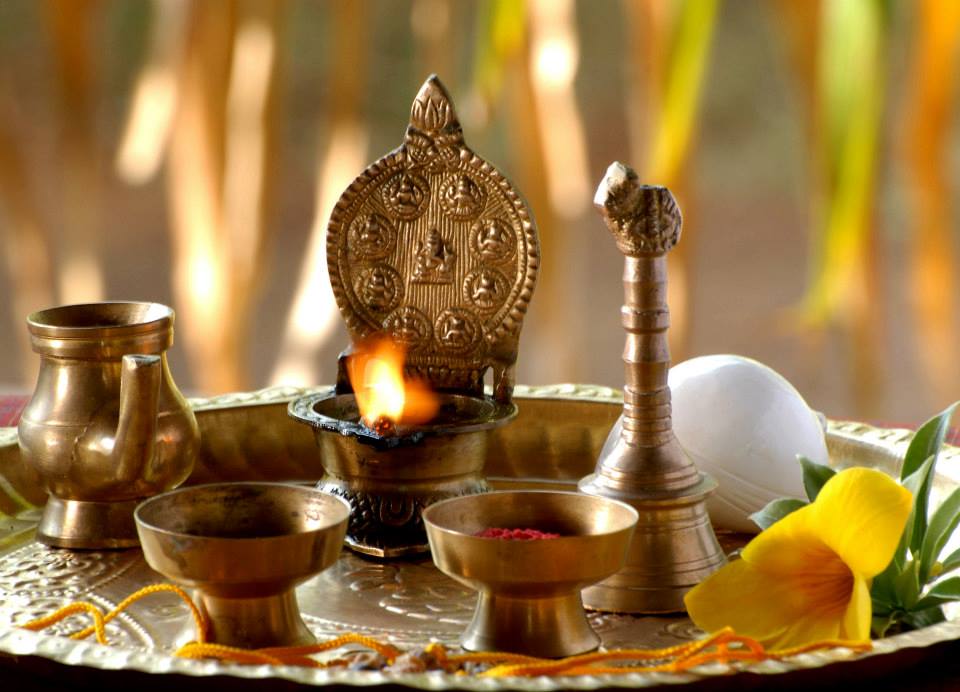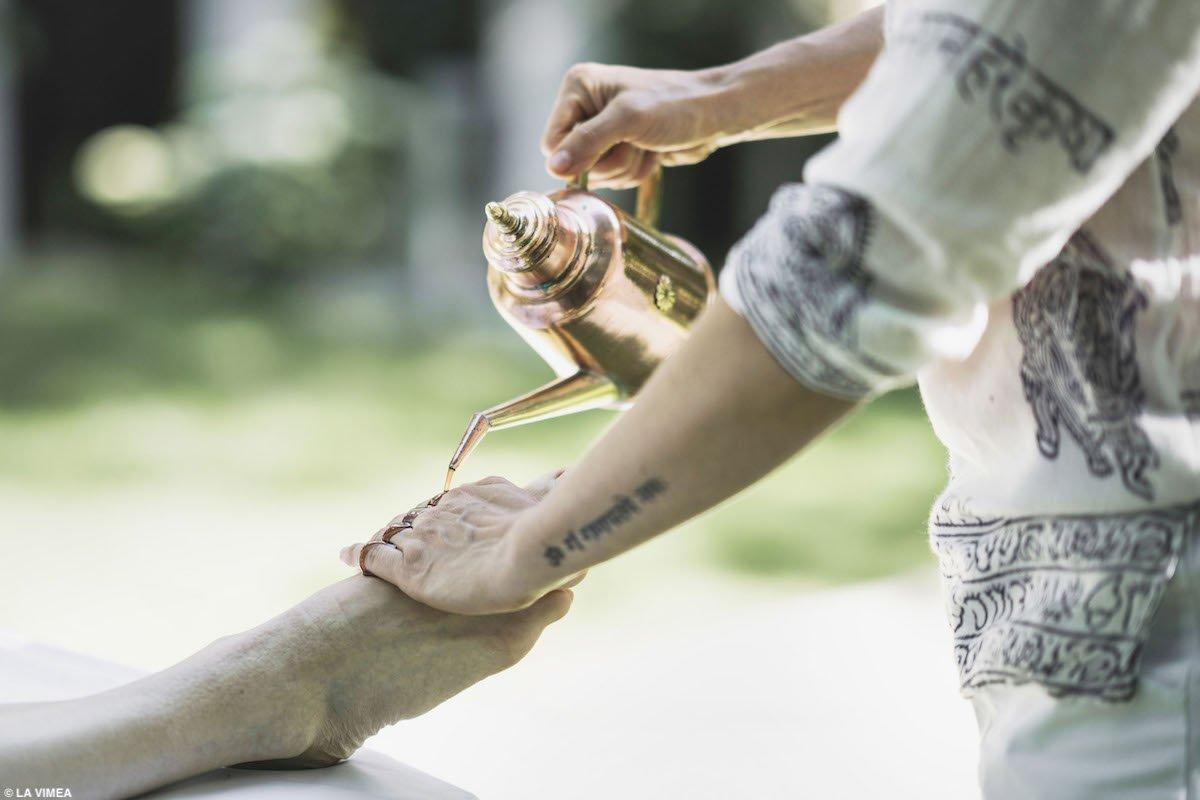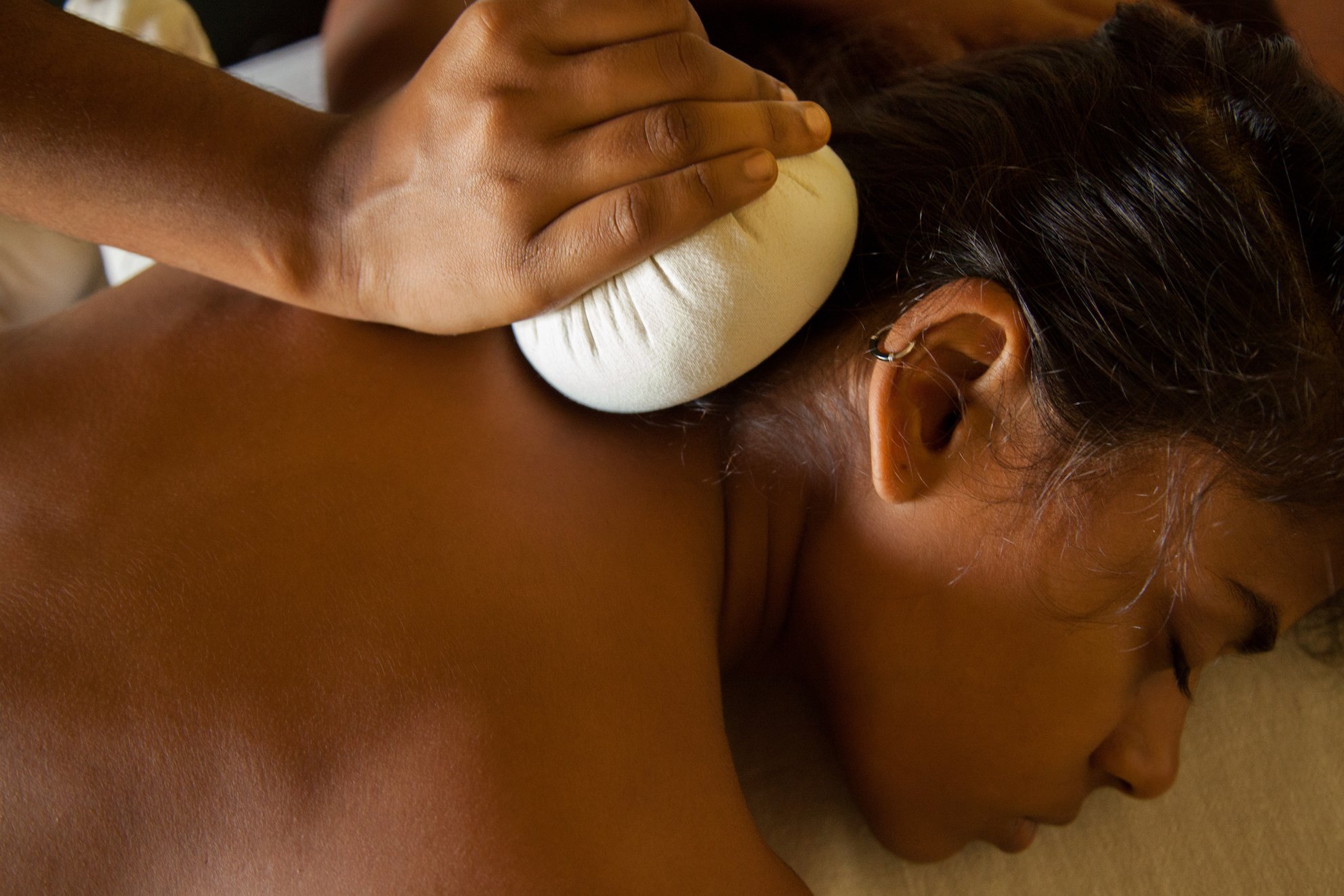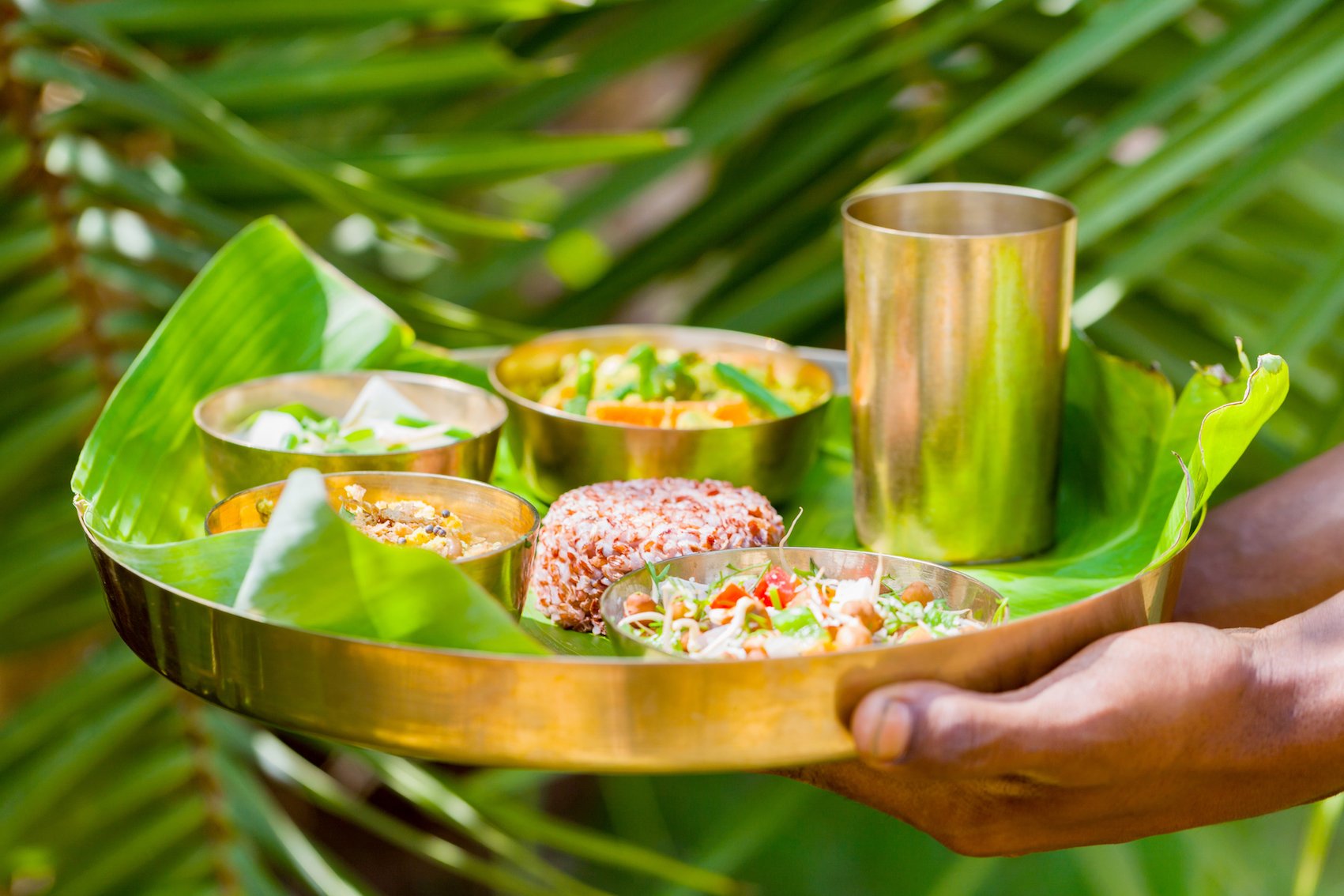Ayurveda, the “knowledge of life”, is a traditional Indian healing art, widely practiced to this day, especially in India, Nepal and Sri Lanka. Here, it is partly on a par with classical medicine. Ayurveda is considered the oldest health system in the world. More than 5000 years old writings prove how far the holistic health concept reaches back into history. Probably even further, since many practices and knowledge were passed on primarily by word of mouth.
In the Western world, Ayurveda has become increasingly well-known and popular in recent years, especially in connection with wellness. Many of the Green Pearls® hotels focus on the Ayurveda principle in the wellness area and in the kitchen as well. In this article we have introduced you to the Indian CGH Earth Hotel SwaSwara, where Ayurveda plays a particularly important role. Now we want to dive a little deeper and find out more about the holistic concept.
All things are interrelated
Ayurveda is a combination of thousands of years of experience, knowledge and philosophy that focuses on the physical, mental, emotional and spiritual aspects of our lives. Since everything is connected with each other, the ancient Indian art of healing has a holistic approach: central elements are massage and cleansing techniques, nutritional science, a spiritual yoga practice and herbal medicine.
All applications and life practices are aimed at increasing our well-being and preventing disease. Detoxification and purification of the body are among the main goals. Stress management, improving fitness, and connection to nature also play an important role in Ayurveda. From all these elements, a holistic and sustainable lifestyle emerges, characterized by respect for the environment and mindfulness in dealing with your own body.

Three Doshas in Balance
A central term in Ayurveda is “dosha,” which is used to describe the basic energies of the body. Two of the five elements are assigned to each dosha:
- Vata (air and ether)
- Pitta (fire and water)
- Kapha (water and earth)
They determine our individual constitutions and regulate the various physical and mental functions. If there is an imbalance, it can lead to discomfort and illness. Accordingly, at the beginning of an Ayurvedic treatment, the individual constitution of the doshas is first determined in order to subsequently bring them into balance.
At this point you should keep in mind: We all have a different composition of the doshas, which has developed from our experiences and our lifestyle in the course of life. So most of us have a tendency towards one or even two doshas and are therefore called e.g. Pitta-type or Vata-Kapha-type. Ayurvedic massages, treatments, yoga and nutrition take this into consideration.
In order to restore balance between the doshas and to eliminate accumulated toxins and waste products, nutritional therapy, various herbs and oils, as well as certain cleansing procedures, known as Panchakarma, are used. Panchakarma includes fasting and (steam) baths. Enemas, therapeutic vomiting and bloodletting are also among the traditional practices, though these are found in Ayurveda hotels only in a weakened or modified form (e.g., as a laxative cure). More common, are massages, yoga and breathing exercises, color and music therapies, and Ayurvedic cuisine with corresponding workshops, such as those offered at Hubertus Mountain Refugio, LA VIMEA, or CERVO Mountain Resort Zermatt.

The Ayurvedic way of life at a glance
The nutritional principles
Food plays a substantial role at the whole Ayurveda. This means that your choice of food should be tailored to your individual dosha constitution, as this also influences your digestion. Even the healthiest food is useless if your body cannot process it well. Therefore, in Ayurvedic cuisine raw food is rarely found, almost all dishes are cooked, sweet meals are often served before the main meal as they are more difficult to digest.
In addition, much emphasis is placed on ensuring that a meal requires you to perform all the functions of eating – biting, sucking, chewing, licking, swallowing – and that the taste sensations (“rasas”) sour, salty, bitter, tart and spicy are combined in a harmonious way. Again, attention is paid to your individual dosha composition.
In Ayurvedic cooking, there are ten royal spices that are said to have great healing powers, including cumin, turmeric, fennel and coriander. And it is also quite tasty, especially if you enjoy it with other people in a calm and relaxed atmosphere. Furthermore, it’s based on a particularly nice basic rule: “When you eat, eat.” So don’t play around on your cell phone 😉
Massages and treatments
Ayurvedic massages also focus on doing something good for your body holistically, purifying and detoxifying it and releasing blockages in the body and mind. For this purpose, besides the hands of the therapists, mainly sesame oil mixed with herbs is used in a variety of ways.
Ayurveda and Yoga
Gentle movement sessions in the form of a spiritual yoga practice are an integral part of Ayurvedic teachings. Depending on the Dosha, you can activate your body and charge it with energy or calm down the fire and restlessness in you. You can easily integrate such yoga exercises into your everyday life at home. For example, how about a short stretching session after getting up or after work?

Ayurveda as a lifestyle is a way to change your body and mind for the better. If you want to dive deeper into the topic, we would encourage you to go on an Ayurveda retreat or to book a stay in an Ayurveda hotel. The advantage there is that you are out of your everyday environment and can therefore learn and implement new behaviors more easily. Even more so when you are guided by the trained experts of our Green Pearls® partners.
Here you can find more on the topics of Ayurveda and Far-Eastern medicine:
India – the Cradle of Yoga and Ayurveda
Far-Eastern Medicine: TCM and Ayurveda




 (4 votes, average: 3.50 out of 5)
(4 votes, average: 3.50 out of 5)


4 thoughts on “Ayurveda – holistic medicine for health and well-being”